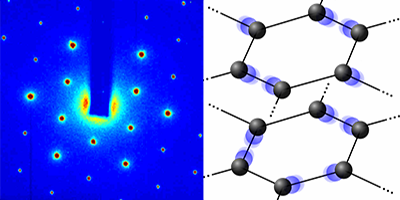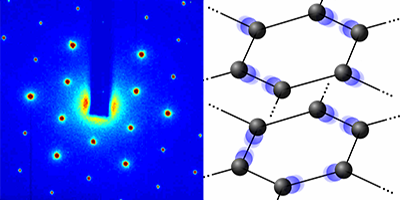Watching Electrons Shake Down a Lattice
As electrons travel through a solid they can scatter off the atomic lattice, interacting with its vibrations (phonons). Such “electron-phonon coupling” can govern the conduction of electrons in solids and is responsible for phenomena like superconductivity. But experiments that can selectively probe electron-phonon coupling, which occurs on extremely fast timescales, are hard to realize. A team led by Bradley Siwick at McGill University, Canada, has now used a high-speed electron diffraction technique to capture the motion of a graphite lattice as it interacts with optically excited electrons.
The experiments were made possible by a pulsed electron source recently developed by the authors, in which radiofrequency fields pack electrons into short bunches of about 100 femtoseconds (fs). After laser pulses excited electrons in graphite, the authors imaged the ensuing lattice motions by observing how the crystal diffracted the electron pulse. They monitored several diffraction peaks, whose positions and intensities shifted as the lattice vibrated. The analysis shows that within of optical excitation most of the electron energy is transferred selectively to two vibrational modes, and that the initial electronic excitation produces coherent waves of lattice motion that shear the graphite planes. After a few picoseconds, this energy is redistributed over all lattice vibrations.
The ability to observe how electrons lose energy to specific phonons will help researchers assess the potential for electronic applications of a wide class of materials, including many carbon-based materials similar to graphite (such as graphene and carbon nanotubes), in which electron-phonon coupling is thought to pose the ultimate limit to carrier mobility.
This research is published in Physical Review Letters.
–Matteo Rini





